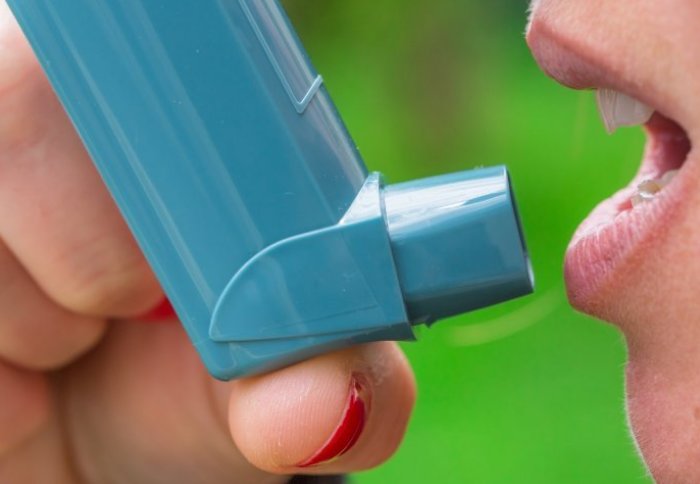Four ways Imperial's Faculty of Medicine is helping asthma sufferers

On World Asthma Day, we look at the last 12 months of asthma activities from the Faculty of Medicine, from public engagement to stem cell treatment.
1. Our researchers are working with the public to investigate the science of childhood asthma

At this year’s Imperial Festival, Breathing Together held its first public event in London. The interactive exhibit was led by some of the world’s top researchers and OKIDO – the people behind the popular CBeebies TV programme, Messy Goes to OKIDO. It featured characters including Messy Monster who joined forces with his creators and leading UK scientists to make the science of healthy breathing fun. Some of the activities which formed part of the event at Imperial Festival included a series of games exploring the theme of regulating breathing and a lively performance from Messy Monster.
Professor Andy Bush, lead researcher on the Breathing Together project said: “This event at Imperial Festival aims to highlight some very important health messages in a fun and engaging way. Together we want to understand why some infants develop wheezing and lung damage which stays with them for life, and to stop this happening.”
2. The potential of stem cell-based treatment for asthma are being explored
In September 2017, early stage trials showed promise for a cell-based therapy for treating lung tissue damaged by respiratory diseases, such as asthma. The trial in a collaboration between Imperial and Hong Kong University (HKU), showed that stem cells can reduce some of the damage seen in human lung cells exposed to cigarette smoke in the lab, as well as reducing similar effects in the lungs of mice.
The group have secured funding to further explore how the mitochondria move from the stem cells into lung cells – a better understanding of which could help to improve future cell-based therapies.
3. Our researchers secured prestigious Asthma UK Fellowships
On receiving the award, Louise said: “Having an Asthma UK fellowship means a great deal to me. I have worked closely with Asthma UK for a number of years and know first-hand the great work they do in patient support and advocacy."
Dr Adam Byrne’s research is about understanding how asthma and metabolism are linked. Asthma does not always happen in the same way, but is basically an umbrella term for various ‘strains’ of the condition. Therefore, his research looks at how cellular metabolism works for each permutation. Part of his work will be investigating if there is a potential for a currently available drug to improve asthma by correcting defective metabolic pathways.
4. Our scientists are uncovering the mechanism behind how diesel fuels could potentially worsen asthma
In May 2017, a study led by researchers from NHLI, was the first to demonstrate a mechanism by which diesel exhaust particles – a major component of air pollution in European cities – directly affect the lungs to initiate symptoms such as a tightening of the airways and cough.
Previously, scientists showed that the effects of air pollution on the lungs of asthmatics correlated with the concentration of small, ultrafine particles inhaled. These tiny particles can get deep into lungs and are so small that cells recognise them as biological molecules which can be absorbed and processed, possibly accounting for their adverse health effects. However, the new findings suggest a more complicated mechanism. The study found that it was chemicals on their surface (the PAHs) which directly stimulated nerves, while the central carbon particles did not.
For further information on World Asthma Day, please visit the Global Initiative for Asthma website.
Supporters

Article text (excluding photos or graphics) © Imperial College London.
Photos and graphics subject to third party copyright used with permission or © Imperial College London.